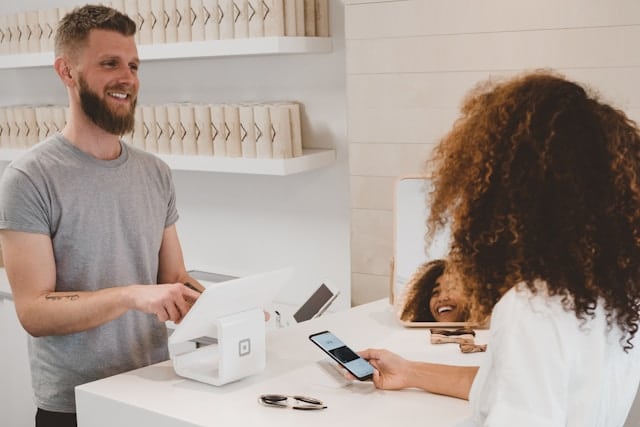What Are the Essential Features for a Secure UK Mobile Payment App?

The surge of digitisation has brought tremendous changes in our daily routines. One of the most significant shifts is observed in the payment sector where the conventional methods are being replaced by mobile payment apps. In the UK, mobile payment apps like Google Wallet, Apple Pay, and Samsung Pay have transformed the way you execute transactions. However, with an escalation in the number of mobile payment apps, the challenge of security becomes paramount. It’s crucial that these apps offer a secure platform for users to conduct transactions. This article will delve into the essential features a secure UK mobile payment app should have to ensure robust security.
Enhanced Security Features
Mobile payment apps are revolutionising the way you transact. However, these apps are also a treasure trove for cyber criminals. To combat this, mobile payment apps should feature robust security measures. This entails encryption—converting data into a code to prevent unauthorised access—and tokenisation—substituting sensitive data with non-sensitive equivalents.
Dans le meme genre : 12 best colorado registered agents reviewed for 2024
One feature that has gained prominence is biometric authentication, such as fingerprint and facial recognition. This provides an additional layer of security as it relies on unique characteristics that are difficult to duplicate. Further, apps should allow you to lock them with a passcode or pattern to prevent unauthorised access.
User-friendly Interface
As the saying goes, "simplicity is the ultimate sophistication," and this holds true for mobile payment apps. The app should present an intuitive and easy-to-navigate interface. This ensures that you can effortlessly make payments, monitor your transaction history, and manage your cards.
A lire aussi : What Are the Best Practices for Designing an Inclusive Workplace in UK Companies?
The app should also provide clear instructions and guidance throughout the payment process, reducing the risk of errors that could potentially lead to financial loss. An app with a complex interface is likely to deter you from using it, despite having high-level security features.
Compatibility across Multiple Platforms
A secure mobile payment app should be compatible across multiple platforms. This ensures that whether you are an Apple, Google, or Samsung user, you can avail the services of the app. Cross-platform compatibility broadens the user base of the app and allows for seamless transactions across various devices.
Moreover, the app should also support contactless payments via Near Field Communication (NFC) or Magnetic Secure Transmission (MST). This means you can use your mobile device just like a contactless card for making payments at physical stores.
Wide Range of Supported Payment Methods
A mobile payment app should support a wide range of payment methods. This includes debit cards, credit cards, bank transfers, and even cryptocurrency. By offering a variety of payment options, the app caters to a diverse group of users with varied preferences.
Furthermore, the app should facilitate instant transfers. In this digital age, you expect transactions to be executed swiftly. Any delay could result in potential financial loss or missed opportunities.
Transparency and Control
Transparency and control are key to assuring users of the app’s credibility and security. The app should provide detailed transaction histories, including the date, amount, and recipient of each transaction. This allows you to track your spending and identify any unusual activity.
Moreover, the app should give you control over your data. This means you should be able to choose the data that the app collects from you, and change these preferences at any time. The app should also comply with data protection regulations, such as the UK’s Data Protection Act.
Mobile payment apps are fundamentally changing the way you transact. As they continue to evolve, it’s imperative that these apps maintain a balance between convenience and security. By incorporating robust security measures, a user-friendly interface, cross-platform compatibility, a wide range of payment options, and transparency, mobile payment apps will allow you to transact with confidence and ease.
Regular Updates and Rigorous Testing
A secure mobile payment app like Google Pay, Apple Pay, or Samsung Pay should routinely receive updates. Regular updates help ensure that the app stays ahead of the curve when it comes to security, addressing any vulnerabilities that may have arisen and adding new features to enhance the user experience. These updates should be available for download on the respective app stores.
Equally important is rigorous testing of the app. Before an update is rolled out, it needs to have been tested extensively to ensure it doesn’t open a window to new security flaws. The app should be put through various scenarios to validate its resilience against potential cyber threats. Any weakness identified should be rectified before the update is released to the public.
It’s paramount that the mobile payment app consistently undergoes testing not just for functionality but also for potential security breaches. As cyber threats continue to evolve, so must the countermeasures. Rigorous testing helps ensure the app’s security privacy is always up to par and your digital wallet remains secure.
Compliance with Financial Regulations
A credible mobile payment app must comply with financial regulations. In the UK, mobile payment apps must comply with regulations set by the Financial Conduct Authority (FCA). The FCA guidelines ensure that the app meets all the requirements in terms of security, privacy, and functionality. Non-compliance could lead to penalties and a loss of trust from the users.
Additionally, the app should support contactless payments, following the guidelines set out by payment systems such as Visa’s Contactless Payments Specification or Mastercard’s Tap & Pay. This ensures a secure and convenient transaction process, where you can just tap to pay with your mobile device, just like a credit card or debit card.
The app should also have a secure key storage system. Your secure key is like the password to your digital wallet. If it gets into the wrong hands, unauthorized individuals could gain access to your account. Therefore, the app should have a secure key storage system that is inaccessible by third parties, ensuring your financial data is always protected.
Conclusion
In conclusion, the features of a secure UK mobile payment app go beyond just encryption and tokenisation. It is important that the app regularly receives updates and undergoes rigorous testing to maintain security privacy and protect your digital wallet. Moreover, the app should be compliant with financial regulations and support contactless payments for a secure and convenient transaction process.
With the continued advancement in technology and the shift towards a cashless society, the importance of mobile payment apps cannot be overstated. However, it’s essential that these apps continue to prioritize security, ensuring that users like you can transact with confidence. By choosing a mobile payment app that incorporates these essential features, you are not just choosing convenience, but also peace of mind.
